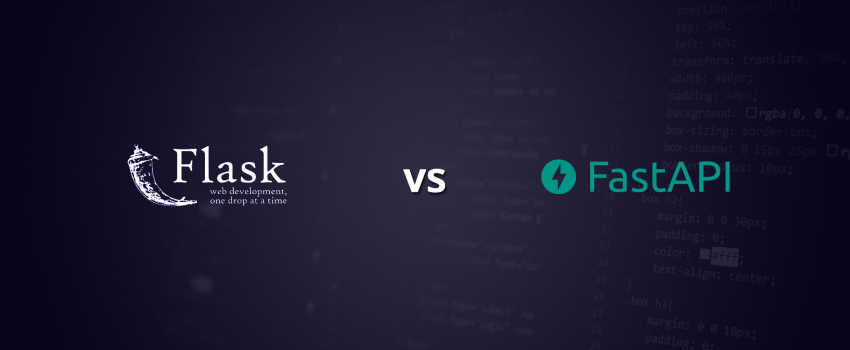Crypto Wallet App Development: Features,...
April 14, 2025

Creating web applications for any sort of project has become essential due to the functionality and capabilities they provide. Backend developers use frameworks to build the required web application APIs and improve the project’s final result.
These web frameworks lend speed, security, and bespoke functionality to the application. Generally, developers use three frameworks for API development;
Our discussion today will focus on the differences between Flask and FastAPI, but you can also build RestAPIs with Django framework. Majorly, these frameworks are used in creating data science applications because these applications pose multidisciplinary challenges.
Hence, the developers rely on these frameworks for web deployment or model deployment, which is the activity to show the results to your users or customers. Earlier, developers were working with Flask, which has its benefits, but there were some shortcomings as well. But that did not stop the developers from using the same.
With the launch of FastAPI, Flask’s popularity has taken a dip, but not to the extent that we can replace Flask with FastAPI. Our discussion will focus on the benefits both these microframeworks bring to the table.
Microframework is a container of code that includes features and functions. Micro frameworks decouple some features from others in a meaningful way. There are several micro frameworks you can choose from, but the decoupling part of every micro-framework might differ from one another.
These microframeworks are extractive from full-stack frameworks and are typically used to build small applications, send & receive HTTP requests, route HTTP requests to dedicated controllers, and create API applications for other tools and services.
With the basics clear, let’s move on to the differentiation part of Flask and FastAPI.
Flask is a Python module and a web framework letting developers build web applications easily. It comes with an easy to extend the core and some amazing features like;
Flask is based on Web Server Gateway Interface (WSGI), which has been the standard in Python for building web applications for a long time. But later, we will discuss that WSGI is one of the reasons why developers are shifting to FastAPI.
Read More- Things to know about Agile Software Development in Python
While we are on the topic, let’s give a minute to discuss the Django framework as well. In Django, you will get an efficient code structure, which helps developers add bespoke functionalities and this is not provided in Flask.
Plus, you will work with Django Rest Framework (DRF), which is a flexible toolkit to build Web APIs with speed and efficiency. While these are the basic differences between Flask and Django, understanding their differences deeply will take more time.
FastAPI has quickly replaced Flask in several use cases due to its high performance and ability to build APIs. The key component of this web application development technology is that it is fast to code and is known to increase the coding speed by 200% to 300%.
The development errors in FastAPI are reduced by 40%, and it provides great editor support for the entire process. Ultimately, it leads to spending less time on debugging. Moreover, FastAPI is a microframework that is written in Python and has little to no dependencies to the external libraries.
There are multiple modules in FastAPI that make writing applications easier without paying attention to protocol management, thread management, and other related components.
Any framework or micro-framework must ease the development process; otherwise, using them won’t bring much benefit to the developer. In our scenario, Flask does not have an inbuilt data validation tool, whereas, FastAPI has one.
In Flask, you need to use Flask-Marshmallow or Flask-Inputs for data validations. These extensions are basically built and managed by the Python community.
But with FastAPI, you can use Pydantic, which is a data validation tool that makes the process much faster and simpler. This contributes to the overall speed enhancement benefit of FastAPI.
As we have mentioned earlier, Flask is deployed on Web Server Gateway Interface (WSGI), and FastAPI is deployed on Asynchronous Server Gateway Interface (ASGI). Due to this, FastAPI is able to handle multiple requests at the same time and process multiple requests.
Dependency Injection is the system whereby a developer removes dependencies between different components. The good thing about FastAPI is that it can remove these dependencies pretty quickly by using the keyword “Depends” in the code script and injecting anything required from classes to functions. Furthermore, in FastAPI, we don’t have to create a new variable for the repository for every task.
However, in Flask, this is not possible, and we would have to create a new function every time the test or function needs to be implemented.
Both Flask and FastAPI have a distinct set of functions, services, and classes that we can run and deploy according to the requirements. Flask is currently more popular than FastAPI, but the latter is gaining speed.
This is because FastAPI has several in-built functions and systems to ease the API development process, including running tests, serialization, and asynchronicity. Overall, FastAPI has proven to be better than Flask. However, it lacks in the support and documentation part, which will be fulfilled as the community and number of developers working with this technology grows.